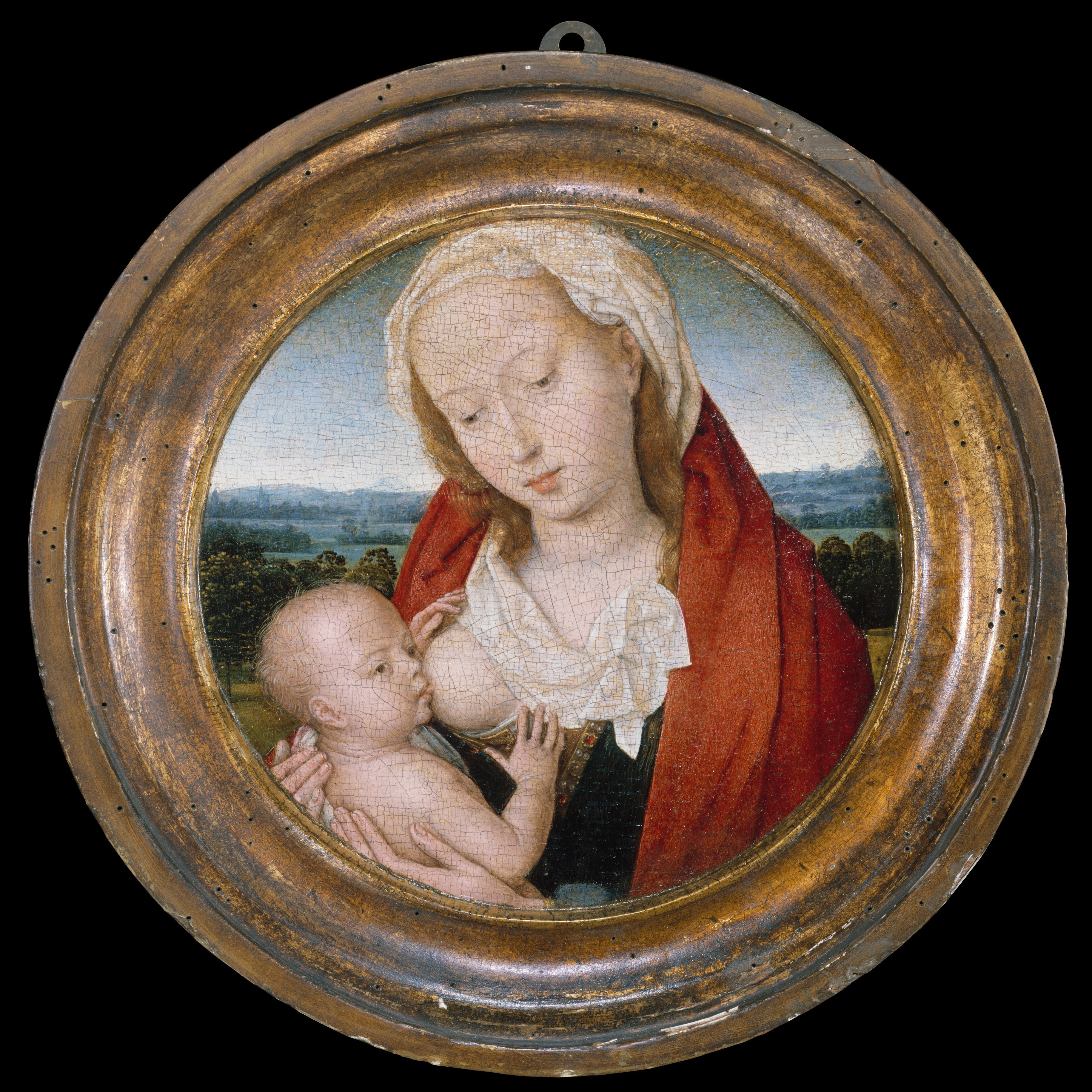Chant in praise of Virgin,sung by Orthodox monks.
Written by St Nectarios of Egina, an Orthodox saint considered
miracle worker himself here you have translation of words
Talk about divine mothers wouldn't be complete without mentioning Orthodox icons, specially those which were and are believed to be working miracles. So many of icons represent Virgin Mary, called Theotokos, with baby Jesus, that this fact amazes how much respect was, and is, given to the idea of motherhood set in most sublime concepts of faith. Theotokos is translated in a simplified way as Mother of God, but exact meaning is "the birth giver to god."
As for icons: those are not considered ordinary images, they are windows to the divine. For Orthodox Christians are presence of the sacred in this world. So, if the icon represents a given saint, this saint presence it there. The icon is treated with respect, can be touched and is kissed in love and honor, and given votive offerings after a performed miracle.
| Our lady Vladimirskaya, patron protector of Russia, Eleusa type icon. The star patterns on her moforion symbolize her VirginityThis icon is damaged, but there is strong sense of radiance. |
Kissing in Eastern tradition was a very important gesture, honorific kissing included, it meaning was quite broad, which kissing the icons also includes.Western culture is only intimate sign of affection, of friendliness when the French kiss the cheeks to say hello, kisses between parents and children, and of course between lovers.In earlier days there was a lot of kissing, including kissing women on hand as sign of honor.It is still practiced in Poland and Vienna, the yearly opera event.
In Biblical times there were kisses between men, family members who were loved, abut also between friends, or people were kissed out of respect. For ex. kissing someones feet was a sign of very strong reverence an honor.. The same in Jesus times. Christian kiss of peace is one example. Also in Greek there were three words expressing love: eros, filos, agape. Eros is erotic love, filos is friendship as love, agape is often translated as charity, but mean unconditional love, the spiritual kind, love as the essence of the divine, love totally selfless. For example the part in New Testament, where Jesus ask Peter "do you love me more than those,"and here he was referring to his disciples. I was introduced to it by someone who studied Koine Greek, what is translated in English is love, but in Greek there are two words in questions and answers used: filos and agape. As you probably guess, the Theotokos as a mother is also example of such divine, all surpassing unconditional love.
It is an important distinction between kinds of love, and it got somehow lost, as the distinction between kisses got lost. In the New Testament at the supper in a house of a Pharisee Jesus defended the woman who washed and anointed and kissed his feet (in Orthodox tradition it wasn't Mary Magdalene) and said: "you gave me no kiss," and praised how she showered his feet with kisses and she will be remembered. This was expression of highest reverence, and the Orthodox Christians remember that. But see by yourself not in my words, why Orthodox Christians kiss icons.
But certain icons are not to available for kissing. Those are the miracle working icons set higher in the altar.
The icon above is Eluesa type of Madonna, (Our Lady Valdimirskaya, today in Tretakov
Gallery). Those graceful depictions are called Virgin of Tender Mercy, of Virgin Showing Mercy,
also found in the West. Virgin's and baby Jesus' cheeks touch, or almost
touch. Those human gestures of affection are very charming, and here is
a small list of miraculous icons in this Eluesa type .
One of miracle icons is the Black Madonna of Czestochowa, this one is not an Eeleusa, but Hedegetria, The Guide as iconograhic type. Hedegetria, called also Madonna Showing the Way, as gestures with her hand toward baby Jesus. This is the oldest and the most common stylistic type.
| Black Madonna of Czestochowa, Byzantine origin icon of Hedegetria type |
The Black Madonna of Czestochowa is the regal powerful mother, who is believed to heal you when you ask for it. Many of us remember from childhood when something hurt, like for example got a bruise from falling off kick scooter, the mother kissed the bruise and felt so much better. This is not to introduce banality in the reverence of miraculous icons, it is just for reminding that the veneration also includes tender feelings which relate to very basic human experiences. Basic, not base.
She was
crowned Queen of Poland. On the walls of the sanctuary there are votive
offerings, as thanks from the donors for the miracles of healing: pieces
of jewelery, pieces of silver in shapes of parts of human body, also
you will see some real life crutches.
Those Theotokos were shown like aristocrats of Byzantine imperial court. But the icon painting, or icon-type of style wasn't limited to the areas we today associate with icons: Italy had those too. Bellow Hedegetria by Giotto. The stripes of fabric angels wear over their robes belong to a traditional fashion of imperial court in Constantinople. Even the Eleusa type has Byzantine moforion
| A very imperial looking Theotokos by Giotto |

_-_WGA6037.jpg)
